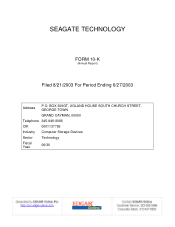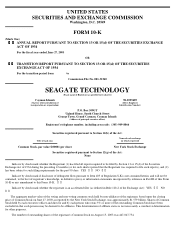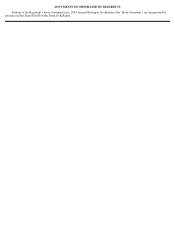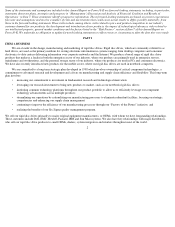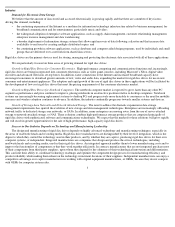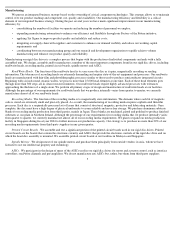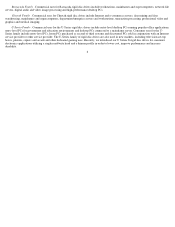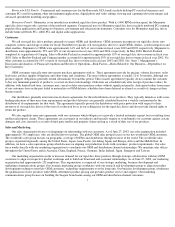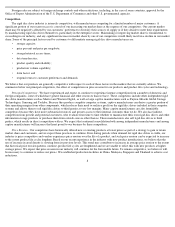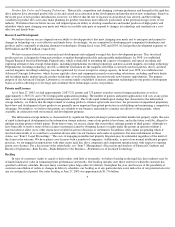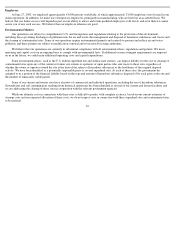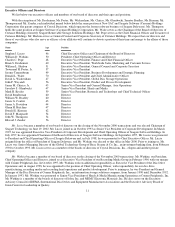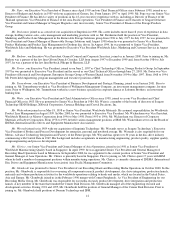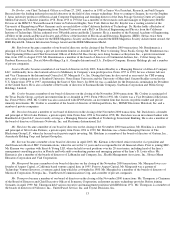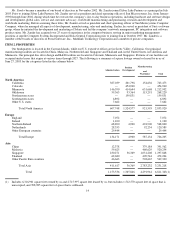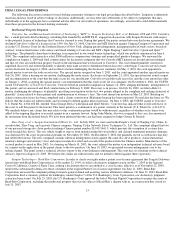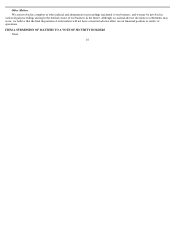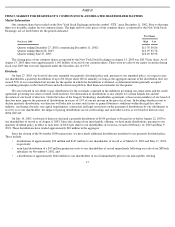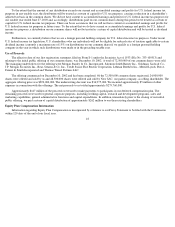Seagate 2002 Annual Report Download - page 11
Download and view the complete annual report
Please find page 11 of the 2002 Seagate annual report below. You can navigate through the pages in the report by either clicking on the pages listed below, or by using the keyword search tool below to find specific information within the annual report.
Foreign sales are subject to foreign exchange controls and other restrictions, including, in the case of some countries, approval by the
Office of Export Administration of the U.S. Department of Commerce and other U.S. governmental agencies.
Competition
The rigid disc drive industry is intensely competitive, with manufacturers competing for a limited number of major customers. A
significant portion of our recent success is a result of our increasing our market share at the expense of our competitors. Our current market
share may be negatively affected by our customers’ preference to diversify their sources of supply or if they decide to meet their requirements
by manufacturing rigid disc drives themselves, particularly in the enterprise sector. Maintaining or improving market share is fundamental to
succeeding in our industry, and any significant increase in market share by one of our competitors would likely result in a decline in our market
share. Some of the principal factors used by customers to differentiate among rigid disc drive manufacturers are:
•
storage capacity;
•
price per unit and price per megabyte;
•
storage/retrieval access times;
•
data transfer rates;
•
product quality and reliability;
•
production volume capability;
•
form factor; and
We believe that our products are generally competitive with respect to each of these factors in the markets that we currently address. We
summarize below our principal competitors, the effect of competition on price erosion for our products and product life cycles and technology.
Principal Competitors . We have experienced and expect to continue to experience intense competition from a number of domestic and
foreign companies, some of which have greater financial and other resources than we have. These competitors include other independent rigid
disc drive manufacturers such as Maxtor and Western Digital, as well as large captive manufacturers such as Fujitsu, Hitachi Global Storage
Technologies, Samsung and Toshiba. Because they produce complete computer systems, captive manufacturers can derive a greater portion of
their operating margins from other components, which reduces their need to realize a profit on the rigid disc drives included in their computer
systems and allows them to sell rigid disc drives to third parties at very low margins. Many captive manufacturers are also formidable
competitors because they have more substantial resources and greater access to their internal customers than we do. We also face indirect
competition from present and potential customers, who evaluate from time to time whether to manufacture their own rigid disc drives and other
information storage products or purchase them from outside sources other than us. These manufacturers also sell rigid disc drives to third
parties, which results in direct competition with us. We expect that continued consolidation both among independent manufacturers and among
captive manufacturers will increase the threat posed to our business by these competitors.
Price Erosion . Our competitors have historically offered new or existing products at lower prices as part of a strategy to gain or retain
market share and customers, and we expect these practices to continue. Even during periods when demand for rigid disc drives is stable, our
industry is price competitive and vendors experience price erosion over the life of a product, and such price erosion can be expected to increase
to the extent product life cycles lengthen. Based on our recent experience in the industry with new product introductions, we believe that the
rate of increase in areal density is slowing from its previous levels. This trend may contribute to increases in average price erosion to the extent
that historical price erosion patterns continue, product life cycles are lengthened and we are unable to offset this with new products at higher
average prices. We expect that price erosion in our industry will continue for the foreseeable future. To remain competitive, we believe it will
be necessary to continue to reduce our prices. We established production facilities in China, Malaysia, Singapore and Thailand to achieve cost
reductions.
8
•
responsiveness to customer preferences and demands.

